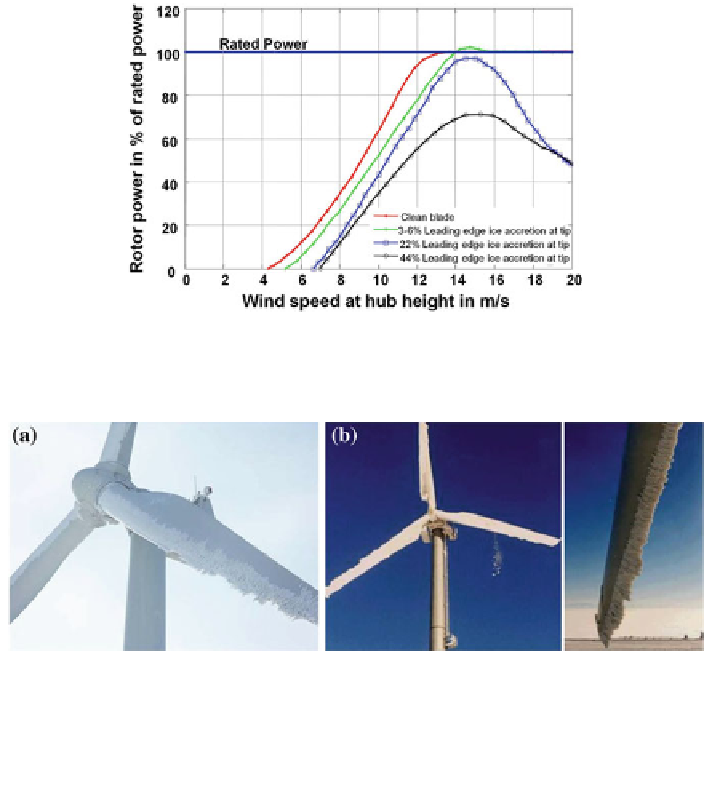Environmental Engineering Reference
In-Depth Information
Fig. 8.1 Power loss estimation due to icing at different wind speeds under different icing
conditions (reproduced based upon Seifert and Richert, 1997) [
1
]
Fig. 8.2 a Ice accumulation on the leading edge of wind turbine blades causes reduced turbine
availability, and if operated, potentially damaging loading and increased public safety concerns.
Photo by: Kent Larsson, ABvee (SE) from Ref. [
2
]; permission received from Goran Ronsten;
b Ice accumulation may either fall off or be thrown off, causing safety issues for persons, animals,
or properties that may be nearby. Photos are of 150 KW Grenchenberg turbines in Switzerland;
photographs from Ref. [
3
]; permission received from Robert Horbaty
local detection of ice on the blade and thus provides a suitable test bed for
localized active de-icing. In Sect.
8.6
, we describe our proposed method of active
thermal control for ice mitigation using distributed resistive heating. In Sect.
8.7
,
we describe the components of our experimental setup including a custom icing
chamber, distributed optical ice and temperature sensors, thermal actuators, and
data acquisition hardware as well as our closed-loop control scheme for active de-
icing. We then discuss a computational model for evaluating distributed heating in
Sect.
8.8
. In Sect.
8.9
, different heater layouts and geometries are numerically
evaluated and compared in terms of de-icing performance. In Sect.
8.10
,we
present closed-loop experimental results of active de-icing including comparing
the performance of continuous Proportional, Integral, and Derivative (PID) control
with high-intensity pulsed actuation. Finally, in Sects.
8.11
and
8.12
, we give

